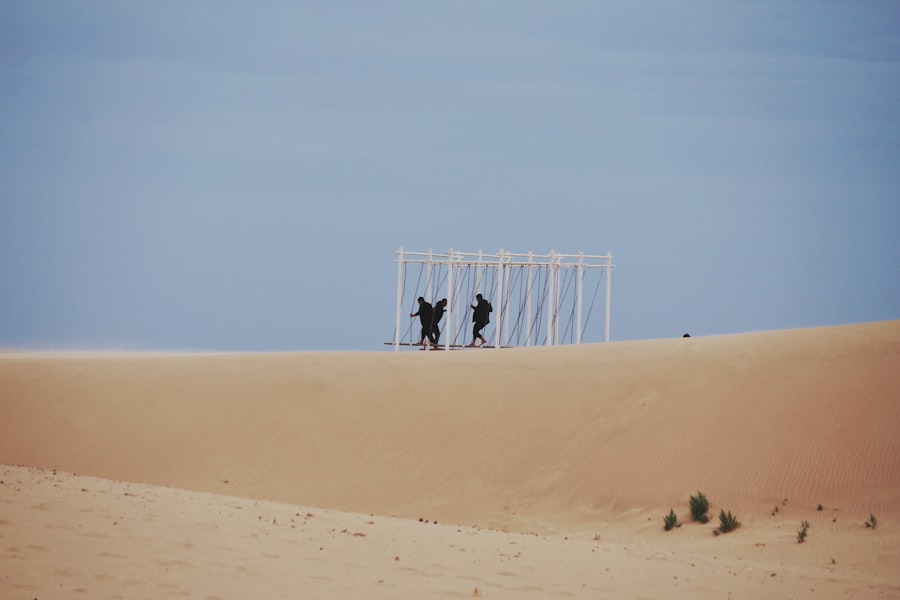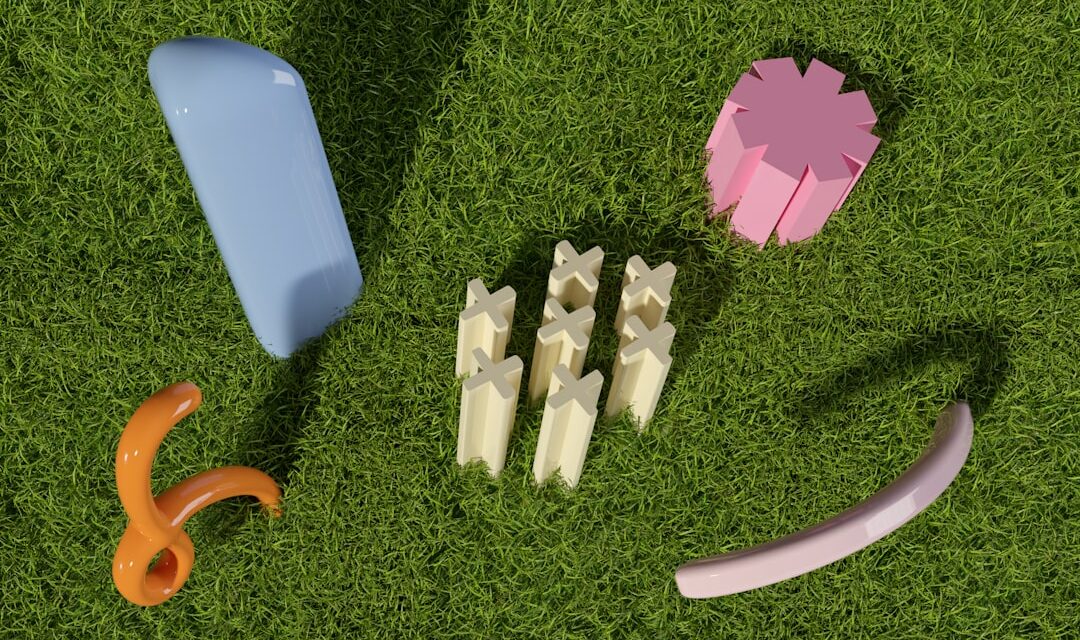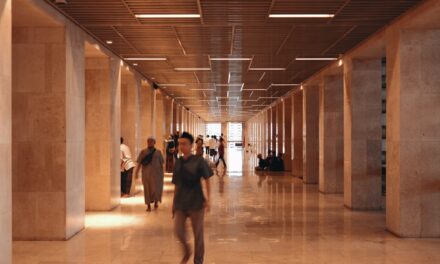Environmental art, also known as eco-art, is a form of artistic expression created in response to the natural environment. This genre encompasses a broad range of artistic practices, including sculpture, installation, land art and performance. Environmental artists frequently utilise natural materials and landscapes as their canvas, producing works that are integrated into the environment and are often temporary or ephemeral in nature.
This artistic approach aims to raise awareness about environmental issues, stimulate thought and discussion about our relationship with the natural world, and encourage action to protect and preserve the environment. Environmental art is typically site-specific, meaning that it is created in and for a particular location, taking into account the unique characteristics of the environment. It can be found in urban spaces, rural landscapes, and even underwater or in the sky.
The intention of environmental art is to engage with the environment in a respectful and sustainable manner, and to create a dialogue between the artwork and its surroundings. This form of art challenges traditional notions of art as something separate from nature, and instead seeks to blur the boundaries between art and the environment.
Summary
- Environmental art is a form of art that is created in nature using natural materials and often addresses environmental issues.
- The history of environmental art can be traced back to the 1960s and 1970s when artists began to use the natural environment as their canvas.
- Environmental art plays a crucial role in society by raising awareness about environmental issues and encouraging people to think about their relationship with the natural world.
- Famous environmental artists include Andy Goldsworthy, Robert Smithson, and Christo and Jeanne-Claude, who have all made significant contributions to the genre.
- Techniques and materials used in environmental art include land art, site-specific installations, and natural materials such as rocks, leaves, and branches.
The History of Environmental Art
The Pioneers of Environmental Art
Land artists such as Robert Smithson, Nancy Holt, and Walter De Maria were among the pioneers of this movement, creating large-scale earthworks and installations that were integrated into the landscape. These artists sought to move away from the traditional gallery space and create works that were directly connected to the earth, often using materials such as rocks, soil, and plants.
Addressing Ecological Issues
As the environmental movement gained momentum in the late 20th century, more artists began to use their work as a platform for addressing ecological issues. This led to the emergence of eco-artists such as Agnes Denes, who created thought-provoking works that addressed topics such as deforestation, pollution, and climate change. Environmental art also became closely linked with activism, with artists using their work to advocate for environmental conservation and social change.
Evolution of Environmental Art
Over time, environmental art has evolved to encompass a wide range of approaches and styles, reflecting the diverse ways in which artists engage with the environment.
The Role of Environmental Art in Society

Environmental art plays a crucial role in society by raising awareness about environmental issues and inspiring action to protect the natural world. Through their work, environmental artists encourage people to think critically about their relationship with the environment and to consider the impact of human activities on the planet. By creating art that is integrated into the landscape, environmental artists also invite viewers to experience nature in new and unexpected ways, fostering a deeper connection with the natural world.
In addition to raising awareness, environmental art can also serve as a catalyst for social change. By addressing pressing environmental concerns through their work, artists can spark conversations and inspire communities to take action. Environmental art has the power to bring people together around shared environmental values and to mobilise collective efforts towards sustainability and conservation.
Furthermore, environmental art can also serve as a form of protest, challenging destructive practices and advocating for more responsible approaches to land use and resource management.
Famous Environmental Artists
There are many influential artists who have made significant contributions to the field of environmental art. One of the most well-known figures is Andy Goldsworthy, a British sculptor known for his site-specific installations made from natural materials such as leaves, stones, and ice. Goldsworthy’s work is deeply rooted in the natural world and often explores themes of impermanence and transformation.
Another prominent environmental artist is Christo and Jeanne-Claude, known for their large-scale environmental installations such as “The Gates” in Central Park and “Surrounded Islands” in Miami. Maya Lin is another artist who has had a profound impact on environmental art. Lin is best known for her design of the Vietnam Veterans Memorial in Washington D.C., which integrates seamlessly into its surroundings and has become a powerful symbol of remembrance and healing.
Other notable environmental artists include Robert Smithson, whose earthworks such as “Spiral Jetty” have left a lasting mark on the landscape, and Agnes Denes, whose thought-provoking works address pressing ecological issues.
Techniques and Materials Used in Environmental Art
Environmental artists employ a wide range of techniques and materials in their work, often using natural elements such as earth, water, plants, and rocks. Many artists create site-specific installations that are designed to interact with the environment in a harmonious and sustainable way. This may involve using materials that are native to the area or that have minimal impact on the landscape.
Some artists also incorporate elements of performance or participation into their work, inviting viewers to engage with the artwork in a direct and immersive manner. In addition to natural materials, environmental artists may also use technology and digital media to create works that address contemporary environmental issues. This can include using video projections, sound installations, or interactive digital platforms to explore themes such as climate change, biodiversity loss, or urban development.
Regardless of the specific techniques and materials used, environmental artists are united by their commitment to creating work that is deeply connected to the natural world and that encourages viewers to consider their relationship with the environment.
Environmental Art and Sustainability

Artistic Practice and Sustainability
Many environmental artists also seek to promote sustainable practices through their work, advocating for conservation, renewable energy, and ecological stewardship.
Raising Environmental Awareness
In addition to promoting sustainability through their artistic practice, environmental artists also play a role in shaping public attitudes towards environmental issues. By creating works that address pressing ecological concerns, artists can inspire viewers to consider their own impact on the planet and to adopt more sustainable behaviours.
Fostering Environmental Responsibility
Environmental art has the potential to foster a greater sense of environmental responsibility and stewardship, encouraging individuals and communities to take action to protect the natural world.
The Future of Environmental Art
The future of environmental art holds great promise as artists continue to explore new ways of engaging with the environment and addressing pressing ecological concerns. As climate change and biodiversity loss become increasingly urgent issues, environmental art has the potential to play a vital role in raising awareness and inspiring action. Artists are likely to continue pushing boundaries and experimenting with innovative techniques and materials, creating works that challenge traditional notions of art and invite viewers to reconsider their relationship with the natural world.
Furthermore, as environmental consciousness grows globally, there is an increasing demand for sustainable art practices that minimise environmental impact. This may lead to greater collaboration between artists, scientists, and environmental organisations, as well as increased support for eco-friendly initiatives within the art world. Environmental art has the potential to become an even more powerful force for social change and ecological advocacy in the years to come, inspiring individuals and communities to work towards a more sustainable future for our planet.
If you are interested in learning more about different art movements, you may want to check out an article on Cubism. This avant-garde movement, which originated in the early 20th century, is known for its abstract and fragmented representations of objects. You can read more about it here.
FAQs
What is environmental art?
Environmental art, also known as land art or earth art, is a genre of art that is created in and inspired by the natural environment. It often involves the use of natural materials and is designed to interact with the landscape in which it is situated.
What are some examples of environmental art?
Examples of environmental art include the Spiral Jetty by Robert Smithson, the Lightning Field by Walter De Maria, and the Floating Piers by Christo and Jeanne-Claude. These artworks are all situated in natural landscapes and are designed to interact with and enhance the environment.
What are the goals of environmental art?
The goals of environmental art can vary, but often include raising awareness about environmental issues, promoting sustainability, and encouraging a deeper connection with the natural world. Environmental artists may also seek to challenge traditional notions of art and the art market by creating works that are impermanent or site-specific.
How does environmental art differ from traditional art?
Environmental art differs from traditional art in that it is often created using natural materials and is situated in outdoor environments. It is also typically designed to change and evolve over time, as it interacts with the natural elements and the passage of time.
What are some techniques used in environmental art?
Techniques used in environmental art can include the use of natural materials such as rocks, soil, and plants, as well as the manipulation of the landscape itself. Environmental artists may also use techniques such as earthworks, sculpture, and installation art to create their works.




